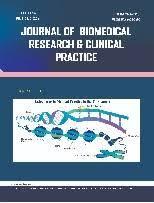Complicated Skin and Soft Tissue Infection in a Nigerian TertiaryHospital: A Review of Cases
Keywords:
Skin and soft tissue infection, Bacterial agents, Antibiotic therapy, Debridement and drainage.Abstract
Background: The epidemiology of Complicated Skin and soft tissue infections with respect to causative strains and
antibiotic susceptibility can no longer be predicted with accuracy. Community-acquired and healthcare-acquired strains
are constantly shifting and this presents clinical challenge in the choice of empirical antibiotic therapy. Objectives: To
determine epidemiological pattern and clinical presentation of complicated skin and soft tissue infections and to identify
bacterial agents responsible and their antibiotic susceptibility pattern with the view to guide empirical therapy. Materials
and methods: Retrospective data was obtained over a 5year period in NKST rehabilitation hospital Mkar, North-central
Nigeria. Fifty one patients aged 2-75years met the criteria for inclusion. Aspirates were taken for microbiologic
investigation. Data was analysed using SPSS version 21. Result: A total 51 patients with skin and soft tissue infections
were studied. Thirty four (66.7%) were males and 17(33.3%) were females with a male: female ratio of 2:1. The
commonest presenting complaint was pain in 51 patients (100%) followed by swelling in 50(98.0%) patients and Fever in
31(60.7 %) patients. The thigh was the commonest 24(47.1%) site involved. aspirate cultures yielded, Escherichia coli in
25(49.0%) patients, and Staphylococcus aureus in 14 (27.5%) patients. There was high level of resistance of isolates to
Augmentin 14(27.5%) and ampicillin in 14(27.5%) patients and sensitivity to ciprofloxacin in 24(47.1%), perfloxacin in
10(19.6%), ofloxacin in 11(21.5%) and ceftriazone in 3(5.8%) patients. Post-operative complications encountered were
multiple abscesses in 28(54.9%) and chronic osteomyelitis in 11(21.6%) patients. Conclusion: The commonest site of
skin and soft tissue infection was the thigh and the commonest risk factor was trauma. Escherichia coli were the
commonest organism isolated from aspirate followed by staphylococcus aurous. Successful management of complicated
skin and soft tissue infections usually involves prompt recognition, resuscitation if required, timely surgical debridement
or drainage, and appropriate antibiotic therapy. Findings from this study suggest that the empirical antibiotics of choice in
our environment are floroquinolone followed by cephalosporin. The combination with metronidazole (anti- anaerobic
agent) may be reasonable due to the fact that anaerobic culture is not routinely done in our environment.





